Kavita Kumari
University of Texas, San Antonio
SafeSplit: A Novel Defense Against Client-Side Backdoor Attacks in Split Learning
Jan 11, 2025
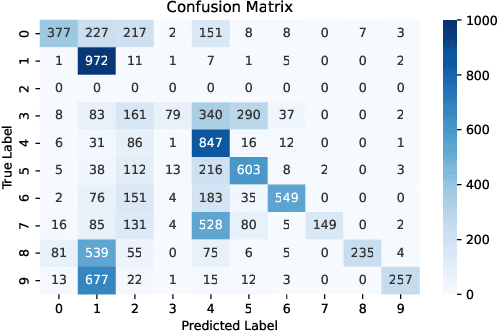
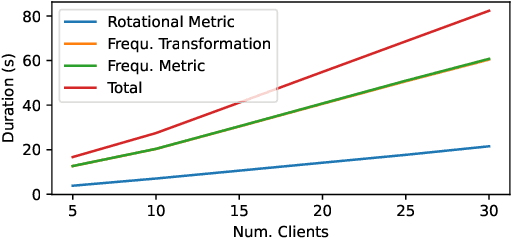
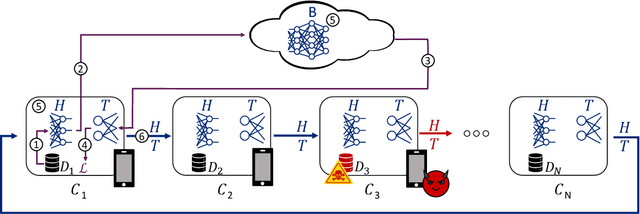
Abstract:Split Learning (SL) is a distributed deep learning approach enabling multiple clients and a server to collaboratively train and infer on a shared deep neural network (DNN) without requiring clients to share their private local data. The DNN is partitioned in SL, with most layers residing on the server and a few initial layers and inputs on the client side. This configuration allows resource-constrained clients to participate in training and inference. However, the distributed architecture exposes SL to backdoor attacks, where malicious clients can manipulate local datasets to alter the DNN's behavior. Existing defenses from other distributed frameworks like Federated Learning are not applicable, and there is a lack of effective backdoor defenses specifically designed for SL. We present SafeSplit, the first defense against client-side backdoor attacks in Split Learning (SL). SafeSplit enables the server to detect and filter out malicious client behavior by employing circular backward analysis after a client's training is completed, iteratively reverting to a trained checkpoint where the model under examination is found to be benign. It uses a two-fold analysis to identify client-induced changes and detect poisoned models. First, a static analysis in the frequency domain measures the differences in the layer's parameters at the server. Second, a dynamic analysis introduces a novel rotational distance metric that assesses the orientation shifts of the server's layer parameters during training. Our comprehensive evaluation across various data distributions, client counts, and attack scenarios demonstrates the high efficacy of this dual analysis in mitigating backdoor attacks while preserving model utility.
Towards a Game-theoretic Understanding of Explanation-based Membership Inference Attacks
Apr 10, 2024
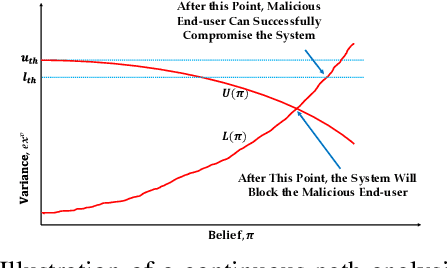

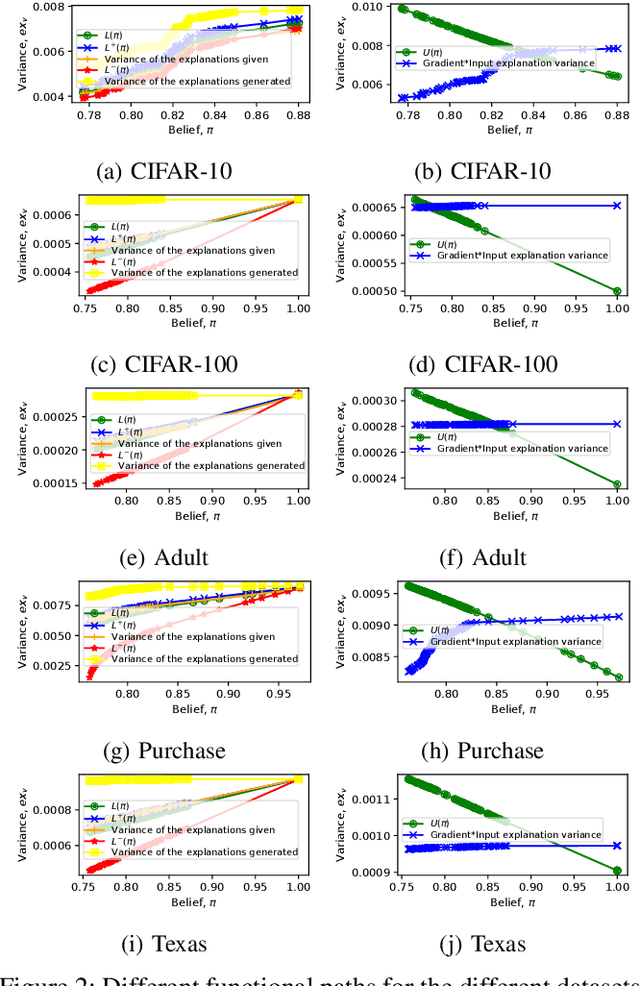
Abstract:Model explanations improve the transparency of black-box machine learning (ML) models and their decisions; however, they can also be exploited to carry out privacy threats such as membership inference attacks (MIA). Existing works have only analyzed MIA in a single "what if" interaction scenario between an adversary and the target ML model; thus, it does not discern the factors impacting the capabilities of an adversary in launching MIA in repeated interaction settings. Additionally, these works rely on assumptions about the adversary's knowledge of the target model's structure and, thus, do not guarantee the optimality of the predefined threshold required to distinguish the members from non-members. In this paper, we delve into the domain of explanation-based threshold attacks, where the adversary endeavors to carry out MIA attacks by leveraging the variance of explanations through iterative interactions with the system comprising of the target ML model and its corresponding explanation method. We model such interactions by employing a continuous-time stochastic signaling game framework. In our framework, an adversary plays a stopping game, interacting with the system (having imperfect information about the type of an adversary, i.e., honest or malicious) to obtain explanation variance information and computing an optimal threshold to determine the membership of a datapoint accurately. First, we propose a sound mathematical formulation to prove that such an optimal threshold exists, which can be used to launch MIA. Then, we characterize the conditions under which a unique Markov perfect equilibrium (or steady state) exists in this dynamic system. By means of a comprehensive set of simulations of the proposed game model, we assess different factors that can impact the capability of an adversary to launch MIA in such repeated interaction settings.
DeepEclipse: How to Break White-Box DNN-Watermarking Schemes
Mar 06, 2024Abstract:Deep Learning (DL) models have become crucial in digital transformation, thus raising concerns about their intellectual property rights. Different watermarking techniques have been developed to protect Deep Neural Networks (DNNs) from IP infringement, creating a competitive field for DNN watermarking and removal methods. The predominant watermarking schemes use white-box techniques, which involve modifying weights by adding a unique signature to specific DNN layers. On the other hand, existing attacks on white-box watermarking usually require knowledge of the specific deployed watermarking scheme or access to the underlying data for further training and fine-tuning. We propose DeepEclipse, a novel and unified framework designed to remove white-box watermarks. We present obfuscation techniques that significantly differ from the existing white-box watermarking removal schemes. DeepEclipse can evade watermark detection without prior knowledge of the underlying watermarking scheme, additional data, or training and fine-tuning. Our evaluation reveals that DeepEclipse excels in breaking multiple white-box watermarking schemes, reducing watermark detection to random guessing while maintaining a similar model accuracy as the original one. Our framework showcases a promising solution to address the ongoing DNN watermark protection and removal challenges.
DEMASQ: Unmasking the ChatGPT Wordsmith
Nov 08, 2023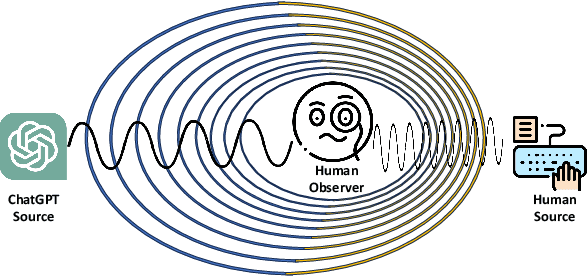
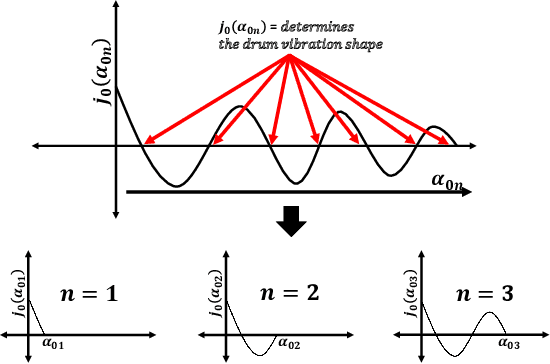
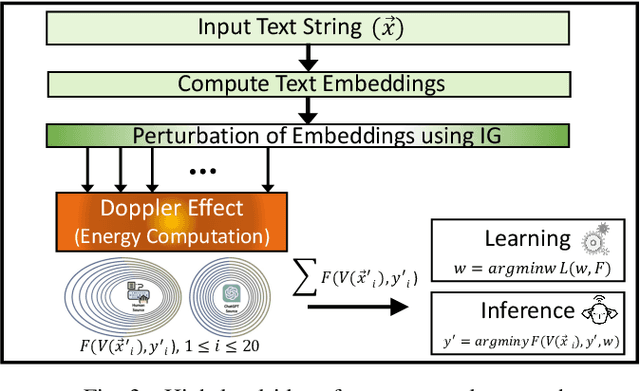
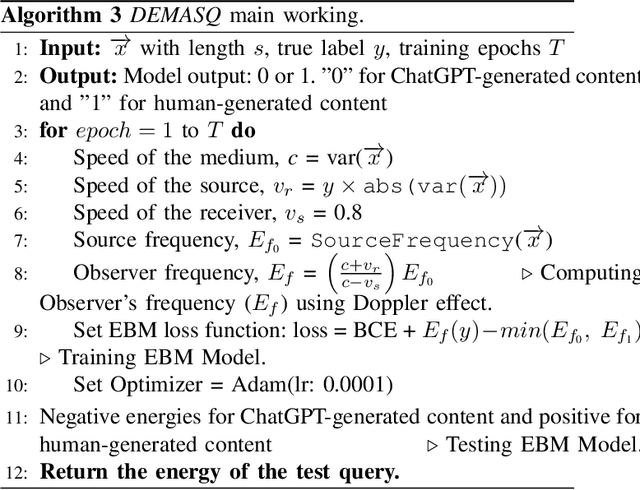
Abstract:The potential misuse of ChatGPT and other Large Language Models (LLMs) has raised concerns regarding the dissemination of false information, plagiarism, academic dishonesty, and fraudulent activities. Consequently, distinguishing between AI-generated and human-generated content has emerged as an intriguing research topic. However, current text detection methods lack precision and are often restricted to specific tasks or domains, making them inadequate for identifying content generated by ChatGPT. In this paper, we propose an effective ChatGPT detector named DEMASQ, which accurately identifies ChatGPT-generated content. Our method addresses two critical factors: (i) the distinct biases in text composition observed in human- and machine-generated content and (ii) the alterations made by humans to evade previous detection methods. DEMASQ is an energy-based detection model that incorporates novel aspects, such as (i) optimization inspired by the Doppler effect to capture the interdependence between input text embeddings and output labels, and (ii) the use of explainable AI techniques to generate diverse perturbations. To evaluate our detector, we create a benchmark dataset comprising a mixture of prompts from both ChatGPT and humans, encompassing domains such as medical, open Q&A, finance, wiki, and Reddit. Our evaluation demonstrates that DEMASQ achieves high accuracy in identifying content generated by ChatGPT.
To ChatGPT, or not to ChatGPT: That is the question!
Apr 05, 2023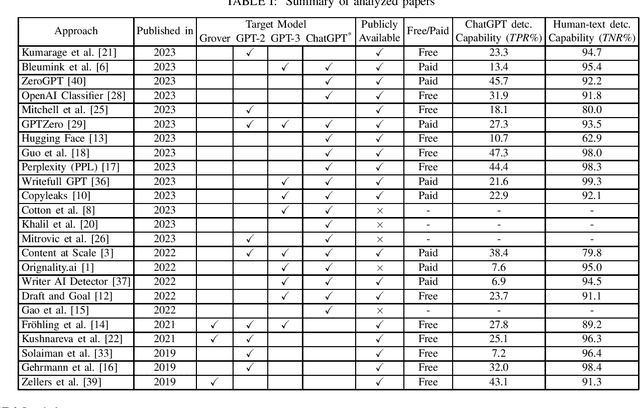
Abstract:ChatGPT has become a global sensation. As ChatGPT and other Large Language Models (LLMs) emerge, concerns of misusing them in various ways increase, such as disseminating fake news, plagiarism, manipulating public opinion, cheating, and fraud. Hence, distinguishing AI-generated from human-generated becomes increasingly essential. Researchers have proposed various detection methodologies, ranging from basic binary classifiers to more complex deep-learning models. Some detection techniques rely on statistical characteristics or syntactic patterns, while others incorporate semantic or contextual information to improve accuracy. The primary objective of this study is to provide a comprehensive and contemporary assessment of the most recent techniques in ChatGPT detection. Additionally, we evaluated other AI-generated text detection tools that do not specifically claim to detect ChatGPT-generated content to assess their performance in detecting ChatGPT-generated content. For our evaluation, we have curated a benchmark dataset consisting of prompts from ChatGPT and humans, including diverse questions from medical, open Q&A, and finance domains and user-generated responses from popular social networking platforms. The dataset serves as a reference to assess the performance of various techniques in detecting ChatGPT-generated content. Our evaluation results demonstrate that none of the existing methods can effectively detect ChatGPT-generated content.
BayBFed: Bayesian Backdoor Defense for Federated Learning
Jan 23, 2023Abstract:Federated learning (FL) allows participants to jointly train a machine learning model without sharing their private data with others. However, FL is vulnerable to poisoning attacks such as backdoor attacks. Consequently, a variety of defenses have recently been proposed, which have primarily utilized intermediary states of the global model (i.e., logits) or distance of the local models (i.e., L2-norm) from the global model to detect malicious backdoors. However, as these approaches directly operate on client updates, their effectiveness depends on factors such as clients' data distribution or the adversary's attack strategies. In this paper, we introduce a novel and more generic backdoor defense framework, called BayBFed, which proposes to utilize probability distributions over client updates to detect malicious updates in FL: it computes a probabilistic measure over the clients' updates to keep track of any adjustments made in the updates, and uses a novel detection algorithm that can leverage this probabilistic measure to efficiently detect and filter out malicious updates. Thus, it overcomes the shortcomings of previous approaches that arise due to the direct usage of client updates; as our probabilistic measure will include all aspects of the local client training strategies. BayBFed utilizes two Bayesian Non-Parametric extensions: (i) a Hierarchical Beta-Bernoulli process to draw a probabilistic measure given the clients' updates, and (ii) an adaptation of the Chinese Restaurant Process (CRP), referred by us as CRP-Jensen, which leverages this probabilistic measure to detect and filter out malicious updates. We extensively evaluate our defense approach on five benchmark datasets: CIFAR10, Reddit, IoT intrusion detection, MNIST, and FMNIST, and show that it can effectively detect and eliminate malicious updates in FL without deteriorating the benign performance of the global model.
A Game-theoretic Understanding of Repeated Explanations in ML Models
Feb 05, 2022
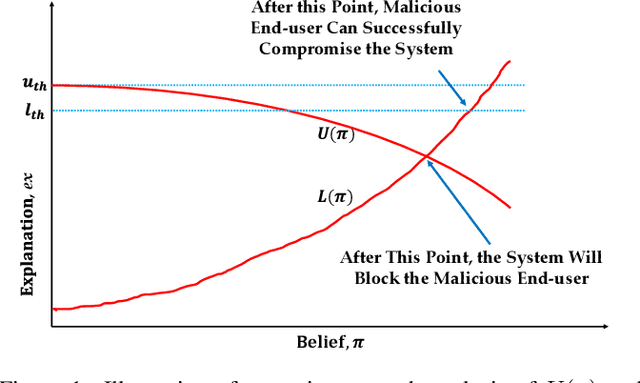
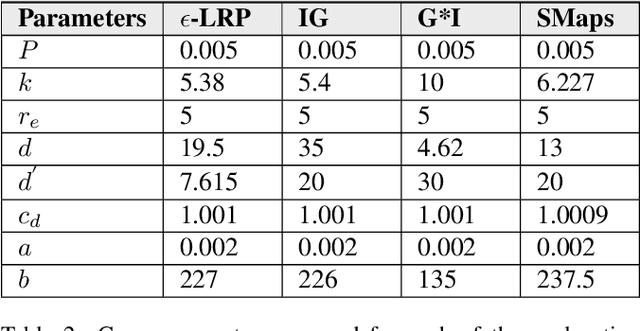
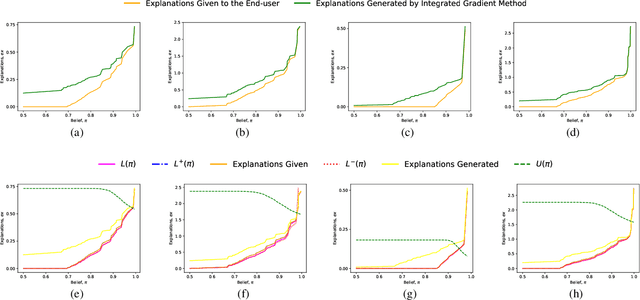
Abstract:This paper formally models the strategic repeated interactions between a system, comprising of a machine learning (ML) model and associated explanation method, and an end-user who is seeking a prediction/label and its explanation for a query/input, by means of game theory. In this game, a malicious end-user must strategically decide when to stop querying and attempt to compromise the system, while the system must strategically decide how much information (in the form of noisy explanations) it should share with the end-user and when to stop sharing, all without knowing the type (honest/malicious) of the end-user. This paper formally models this trade-off using a continuous-time stochastic Signaling game framework and characterizes the Markov perfect equilibrium state within such a framework.
 Add to Chrome
Add to Chrome Add to Firefox
Add to Firefox Add to Edge
Add to Edge